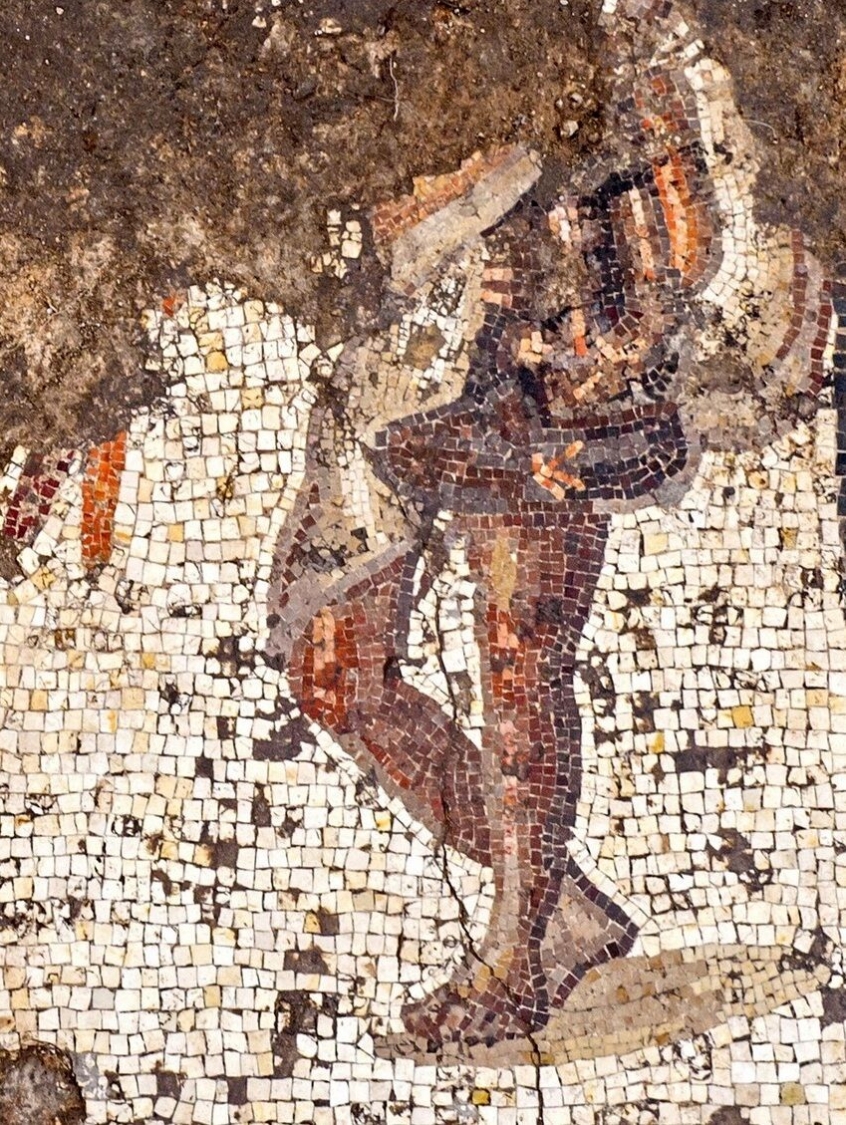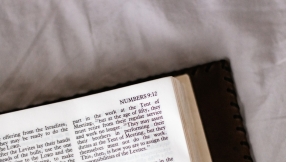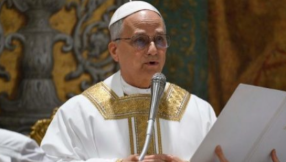The largest conservation and reconstruction project ever undertaken in Israel has uncovered a rare, multicoloured mosaic from the Roman period, in Caesarea National Park.
The 'spectacular' Roman artefact, bearing an ancient Greek inscription and dating to the 2nd-3rd centuries AD, has been uncovered during excavations led by the Israel Antiquities Authority (IAA). The excavations, partnered with the Caesarea Development Corporation and the Israel Nature and Parks Authority are part of a reconstruction effort on the entrance bridge to Caesarea, dating back to the crusades.
Dr Peter Gendelman and Dr Uzi 'Ad, directors of the excavation for the IAA, said the mosaic was of 'a rare high quality'.
It features three figures, multicolored geometric patterns and a long inscription in Greek, which were damaged by the Byzantine building constructed on top of it. The figures, all males, wear togas and apparently belonged to the upper class. The central figure is frontal and the two others face him on either side.
Gendelman and 'Ad said: 'Who are they? That depends on what the building was used for, which is not yet clear. If the mosaic was part of a mansion, the figures may have been the owners. If this was a public building, they might have represented the donors of the mosaic or members of the city council.'

Preservation work on the mosaic, as well as efforts to make it accessible to the public, are now under way.
Guy Swersky, deputy and acting chairman of the Edmond de Rothschild Foundation said: 'Old Caesarea never stops surprising, fascinating and thrilling us, time after time revealing slices of history of worldwide significance. This amazing mosaic is a unique find in Israel. This is especially true considering where it was found – in the northern part of the park, in an area that has hardly been excavated.'
Michael Karsenty, CEO of the Caesarea Development Corporation, said: 'The impressive mosaic joins the many other important recently unearthed archaeological finds. Among these is the altar of the temple built by Herod 2,000 years ago and mentioned by the ancient historian Josephus Flavius; a mother-of-pearl tablet etched with a seven-branched candelabrum, as well as the statue of a ram, which was a symbol of Christian congregation in the Byzantine period.'
In the first century the coastal city of Caesarea, located north-west of Jerusalem, was a famous, opulent gentile (non-Jewish) metropolis and features several times in the New Testament book of Acts. It was in Caesarea that the gentile centurion Cornelius was converted and baptized through Peter (Acts 10), marking the historic expansion of salvation from the Jewish people to the gentiles.













